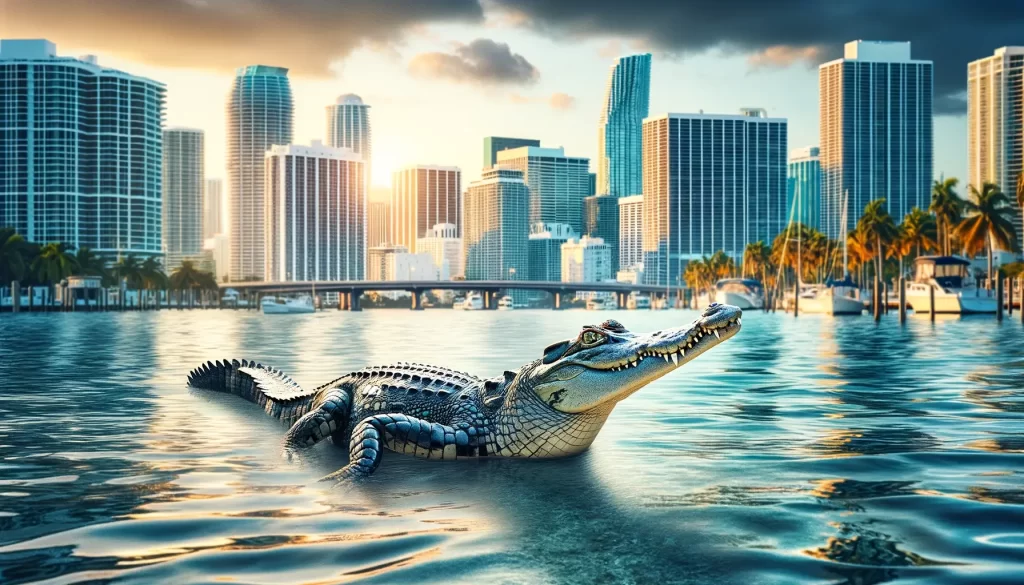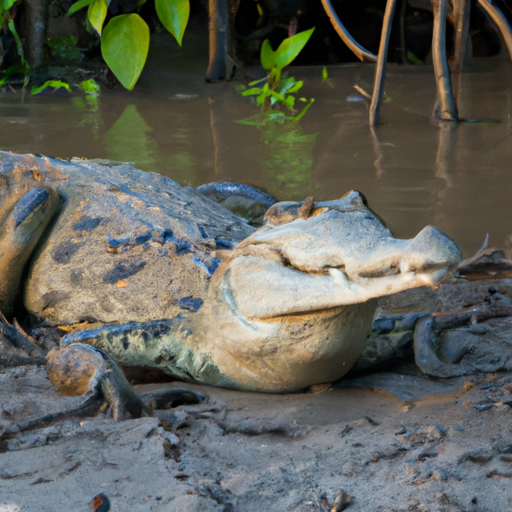
Have you ever wondered if there are crocodiles in Miami? In this article, we’ll explore whether these ancient reptiles can be found in the bustling city of Miami.
Known for its beautiful beaches and vibrant nightlife, Miami might not be the first place that comes to mind when you think of crocodiles.
However, you might be surprised to learn about the presence and occasional sightings of these captivating creatures in the Miami-Dade County.
Join us as we uncover the truth about crocodiles in Miami and get ready to be amazed by the wild side of this vibrant city.
Background
Florida’s crocodile population has been a subject of interest and concern for many years. While alligators are more commonly associated with the state, crocodiles also call Florida home. The subtropical climate and diverse ecosystems provide ideal conditions for both species to thrive.
Recent crocodile sightings in Miami have sparked curiosity among locals and tourists alike. The sightings have raised questions about the presence of crocodiles in this bustling metropolitan city. Understanding the characteristics, behaviors, and conservation efforts surrounding these reptiles can help shed light on this intriguing topic.
Crocodiles vs. Alligators
Crocodiles and alligators are often mistaken for one another due to their similar appearances. However, several key physical characteristics can help distinguish between the two species. Crocodiles have a V-shaped snout, which is narrower and more pointed than that of alligators. Additionally, when their mouths are closed, crocodiles’ teeth on both jaws are visible, while alligators conceal their lower teeth. Another notable distinction lies in their habitat preferences and behaviors.
Crocodiles primarily inhabit saltwater or brackish environments, such as coastal areas and mangrove swamps. They are more adaptable to these habitats and are proficient swimmers. In contrast, alligators prefer freshwater bodies, such as lakes, ponds, and slow-moving rivers. They are well-adapted to survive in freshwater ecosystems and tend to be less aggressive than crocodiles.
Crocodile Species in Miami
Two crocodile species are commonly found in Miami: the American crocodile (Crocodylus acutus) and the Nile crocodile (Crocodylus niloticus).
The American crocodile is native to Florida and is listed as a threatened species by the U.S. Fish and Wildlife Service. They have a relatively narrow snout and are typically found in coastal regions, including Biscayne Bay and the Florida Keys.
The Nile crocodile, on the other hand, is not native to Florida and is considered an invasive species. While their presence in Miami is relatively rare, there have been occasional sightings reported. Nile crocodiles are known for their larger size and aggressive nature, posing potential risks to both humans and native wildlife.

Crocodile Conservation Efforts
Due to habitat loss, pollution, and poaching, both American and Nile crocodiles face significant conservation challenges. The American crocodile is listed as an endangered species in Florida, and several conservation measures are in place to protect their populations.
Conservation efforts for American crocodiles include habitat restoration projects, monitoring and tracking programs, and public awareness campaigns. Strict regulations have been implemented to safeguard their nesting sites and control human activities that may disrupt their natural habitat.
Regarding Nile crocodiles, Florida Fish and Wildlife Conservation Commission works diligently to prevent their establishment and eliminate any individuals found in the state. This proactive approach aims to protect the native ecosystems and ensure the safety of both people and the native crocodile species.
Human-Crocodile Interactions
Throughout history, there have been incidents involving human-crocodile interactions in Miami and its surrounding areas. These encounters, while relatively rare, emphasize the need for caution and awareness when in crocodile habitats.
One notable incident occurred in 2007 when a young boy was bitten by an American crocodile while swimming in a canal. Such incidents serve as a reminder that crocodiles are wild animals and should be treated with respect. Understanding safety guidelines and taking necessary precautions can greatly reduce the likelihood of these encounters.
Factors Attracting Crocodiles to Miami
Several factors contribute to the presence of crocodiles in Miami and its surrounding areas. The subtropical climate, with warm temperatures year-round, provides optimal conditions for crocodile survival. Additionally, the diverse array of habitats, including mangrove forests and coastal regions, supports their existence.
Migration patterns also play a role in attracting crocodiles to Miami. As crocodile populations expand or face habitat constraints in their natural habitats, they may venture into new areas in search of suitable environments. This can result in occasional sightings in urban settings such as Miami.
Crocodile Population Growth in Miami
As a result of conservation efforts and suitable habitats, the crocodile population in Miami has seen a gradual increase in recent years. While specific population numbers are difficult to determine, increased public awareness and wildlife monitoring have led to more frequent reports of crocodile sightings.
This population growth brings both benefits and challenges. On one hand, it signifies successful conservation measures and the gradual recovery of these reptiles’ populations. On the other hand, increased encounters between crocodiles and humans may pose risks and require effective management strategies.
Crocodile Habitats in and Around Miami
Crocodiles in Miami can be found in various habitats, with two prominent locations being Biscayne Bay and Everglades National Park.
Biscayne Bay is a prime location for American crocodiles. The mangrove shorelines and abundant prey attract these reptiles, providing them with a suitable environment for nesting, feeding, and reproduction. While crocodile sightings in highly populated areas of Miami Beach are not uncommon, their natural habitats remain largely undisturbed within the bay.
Everglades National Park, known for its vast wetlands, also serves as a habitat for both American and Nile crocodiles. The park’s unique ecosystem, which combines freshwater and saltwater habitats, offers a diverse range of prey and shelter options for crocodiles. This protected area allows crocodiles to thrive and maintain a balanced ecosystem.
Crocodile Sightings in Miami
Public reports of crocodile sightings in Miami have become increasingly common in recent years. These sightings often occur in coastal regions, canals, and even residential neighborhoods near bodies of water. While some may find these encounters thrilling, it is essential to remember that crocodiles are wild animals with specific habitat requirements.
To monitor and better understand crocodile populations, wildlife agencies actively collect data on sightings and conduct surveys in crocodile habitats. These efforts contribute to ongoing research and conservation initiatives aimed at protecting both humans and crocodile populations.
Precautions and Safety Measures
When living in or visiting areas where crocodiles are present, it is vital to take precautions to ensure both your safety and the welfare of these reptiles.
One of the most effective ways to avoid encounters is to be aware of your surroundings and stay away from known crocodile habitats. If you live near a body of water or plan to visit areas such as Biscayne Bay or the Everglades, familiarize yourself with crocodile safety guidelines.
If you do come across a crocodile, maintain a safe distance and never approach or feed them. It is important to remember that feeding crocodiles disrupts their natural behavior and may lead to aggressive tendencies. Should you encounter an aggressive or injured crocodile, it is crucial to contact the appropriate authorities, such as the Florida Fish and Wildlife Conservation Commission, who have trained professionals to handle such situations.
By following these precautions and safety measures, humans and crocodiles can coexist peacefully in Miami’s unique ecosystem.
Final Thoughts
In conclusion, while alligators are more commonly associated with Florida, crocodiles also have a presence in Miami.
Understanding their physical characteristics, habitat requirements, conservation efforts, and necessary safety measures is crucial for coexisting with these magnificent reptiles.
The gradual increase in crocodile populations and their occasional sightings in urban areas highlight the need for continued awareness and responsible interactions between humans and crocodiles in Miami.



